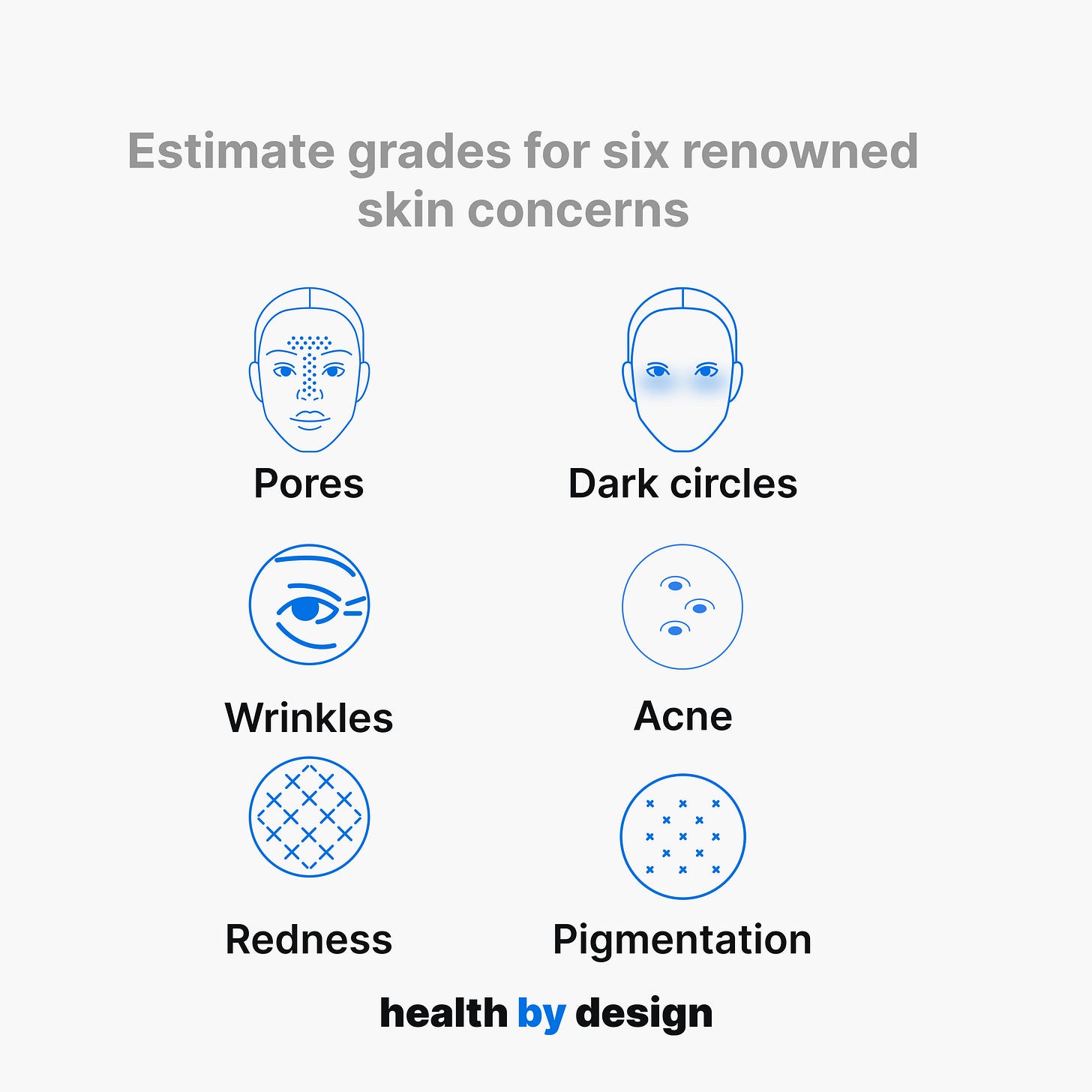Get Matched! AI Skincare Finds Your Perfect Products
Personalized Recommendations Based on Your Skin and Product Ingredients.
Imagine a future in which you can access a personal skincare consultant that empowers you to confidently select products that align with your skin goals. This is the vision presented in the research paper titled “Deep learning- based skin care product recommendation: A focus on cosmetic ingredient analysis and facial skin conditions1” by Lee J et al. The researchers proposes a novel deep learning-based cosmetic product recommendation system. The system combines two key elements: AI skin analysis and Cosmetic ingredient analysis. AI skin analysis facial images for skin concerns and their severity. While cosmetic ingredient analysis predicts the efficacy of skin care product based on composition and order of ingredients.
Lastly is the recommendation module which matches user skin analysis with right products based on ingredient analysis.
The need for such a system
Finding right skincare products can be endless cycle of trial and errors for consumers. Traditional product recommendations have heavily relied on user reviews, ratings and demographics, which can be misleading or not relevant to one’s needs. By analysing the actual ingredients, consumers can understand what constitute in those cosmetics products. Allowing consumers to understand the effect of the ingredients inside beyond marketing tags. Also, this goes well in line by growing consumer interest in understanding how those cosmetic ingredients affect their skin health. Consumer behaviour is going in broader shift towards increased interest in ingredient transparency and demand for personalised experiences.
By combining this AI, it can be possible to take the guesswork out of this process and get matched with products that produce best results.
Skin Image Analyser
The system uses a deep learning model based on U-Net architecture to segment and analyze images of the user’s face. The advantage of U-Net architecture is as it offers accurate segmentation of skin conditions under various shooting conditions. The model has been trained to identify six key skin concerns : pores, acne, wrinkles, pigmentation, redness and dark circles. Estimating grades with severity of each concern.
The model’s performance for skin conditions was validated against expert dermatologist evaluations. Where it showed strong correlations.
Ingredient Analysis
The ingredient analyzer evaluates the potential effects of a cosmetic product based on its list of ingredients. It utilises deep learning model called transformer to analyze the ingredients. It treats the list as a sequential data where order of ingredients matters. The regulation in most countries require ingredients to be listed in descending order of their quantity. Followed by tokenization and vectorization of ingredient list. Each ingredient is assigned unique index to differentiate from each other. Transformer encoder analyses relationship between ingredients in sequence to predict the effects of the product. Then the output of the transformer is fed to multi-label classifier which predicts the product’s multiple effects.
Report Card for your Skin : Recommendation module
The recommendation module acts as a matchmaker. It combines results from two analyzers - the skin analyzer and the ingredient analyzer. The scores from both analyzers are represented as vectors. It calculates the cosine similarity between user’s skin vector and the efficacy product vector of each product. If the angle between two vectors is indicating value closer to 1, it means high similarity. That product closely aligns with user’s need. Further, the products are filtered based on user’s skin type - oiliness, dryness, and sensitivity. Ensuring product recommendations are safe and effective.
HBD Note: By combining AI powered skin analysis with sophisticated ingredient analysis, the system offers a report card for skin health. The users are empowered with this information to make individual decisions based on their needs. Such system can be offered as an app service as personal skincare guide.
Concerns and Challenges
The biggest concern with current model of ingredient analyser is its data imbalances. Which can impact the effectiveness of the analysis. It was found that accuracy of product categories with fewer sample was lower. Leading to less accurate results of certain conditions like acne.
Second is the marketing claims mentioned on products. Relying on marketing tags might result in exaggerated or misleading results.
The researchers mentioned to continue to gather more comprehensive datasets which in turn will help in enhancing the performance and completeness of the recommendation system. It has potential to become more powerful tool for consumers by incorporating actual clinical trial data. Thus producing more objective and scientifically -grounded assessment of product effectiveness.
The researchers also mentioned to include additional attributes like skin firmness, radiance, cancer and texture in the future.
Conclusion and Takeaways
This paper presents a compelling take on how future of skincare might look like. We can expect future where AI continues to evolve to create more innovative solutions. Empowering consumers to make informed decisions about their skincare journey based on their individual needs. Moreover, we can expect that these system will enable consumers to track their skin’s progress over time, predict future skin concerns and develop hyper personalised products.
The article sits at convergence of several key trends which includes growing consumer demand for personalized experience, transformer models and computer vision models to analyse both skin condition and product efficacy. With a level of detail which was not possible before. The system signifies a paradigm shift towards a more data driven and scientific approach.
Audio summary: Get Matched! AI Skincare Finds Your Perfect Products
Lee J, Yoon H, Kim S, Lee C, Lee J, Yoo S. Deep learning- based skin care product recommendation: A focus on cosmetic ingredient analysis and facial skin conditions. J Cosmet Dermatol. 2024;23:2066-2077. doi:10.1111/jocd.16218










